Useful Tips on How to Photograph Winter Sports
By Kent DuFaul
With winter rapidly approaching those of us who live in the Northern Hemisphere, we thought it might be fun to pass along some tips on how to photograph winter sports. Going out into the cold with your camera presents its own unique set of challenges. And those challenges will vary slightly depending on whether you're a digital shooter, or a film shooter. We're going to cover some of the things you need to know in order to produce great, outdoor, winter, action, photographs. These tips will also apply to those who enjoy shooting outdoor winter weather: whether it's sports, landscapes, portraits, family, etc.
These are the things you need to know when photographing in cold winter weather.
- Equipment
- Batteries
- Exposure / Metering
- Lighting
- Color Temperature
- Safety
- Film vs. Digital
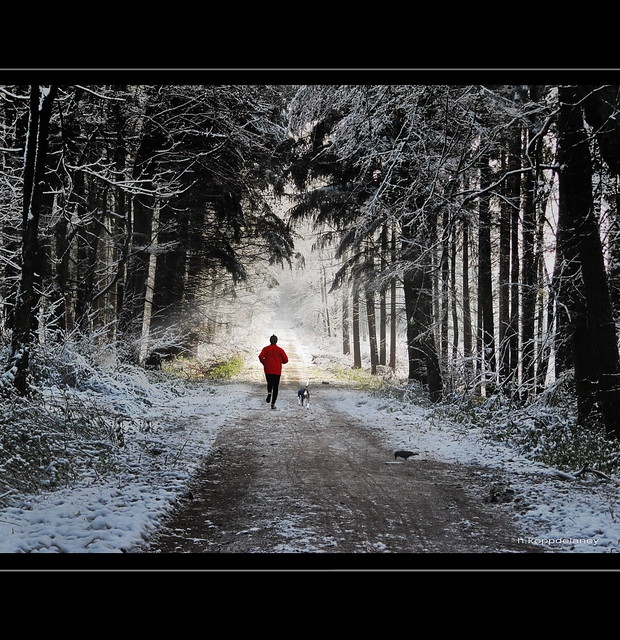 Runner by h.koppdelaney, on Flickr
Runner by h.koppdelaney, on Flickr
A winter wonderland- Moody hues of white, and a dash of color, can provide a dynamite opportunity for photographs!
Equipment
Let's
talk specifically about cameras and lenses. We'll deal with batteries
next. One of the main challenges to winter photography is the cold dry
air and how it will affect the performance of your gear. We are used to
warm moist air. Our homes, and businesses, are artificially heated, and
sometimes moistened, to keep us comfortable in cold temperatures. When
we exhale, our breath is warm and moist. Camera gear does not react well
to sudden changes between, cold and dry, and, warm and moist. The
result of mixing these two can range from annoying to disastrous. Here
are two important points for you to remember!
- There is no problem taking your camera gear from warm and moist to cold and dry. There is a huge problem going the other way. Have you ever walked inside from a winter day and had your glasses fog up? Well, the exact same thing is going to happen to your camera gear. The difference is it's going to happen “inside” your camera gear. The thought of moisture forming inside your precious lenses doesn't sound too appealing does it? What you need to do is carry large ,sealable, (ziplock) style, plastic bags with you when you go on winter shoots. Whenever you return from the cold into a warm environment seal your gear into the bags. This will cause any condensation to form on the bag and not inside your gear. There are some variables with the condensation issue. The colder it is the more likely it is to happen. The longer the camera, and lens, is exposed to the cold- the more likely it is to happen. If for example, you jump out of your warm car, snap a few photographs, and jump back in, you probably don't need to worry. Our rule of thumb is: 32F / 0C, or colder, exposed for 5 minutes, or more, it goes into the plastic bag.
- Here is a second tip that many of you probably haven't thought about: your breath. When you exhale, you release warm moist air. Depending on how cold it is, that warm moist air can freeze almost instantly. When you're shooting in a cold environment wear a mask over your nose and mouth, or, hold your breath as you bring the camera to your face. This will prevent you from fogging up your own viewfinder or LCD screen.
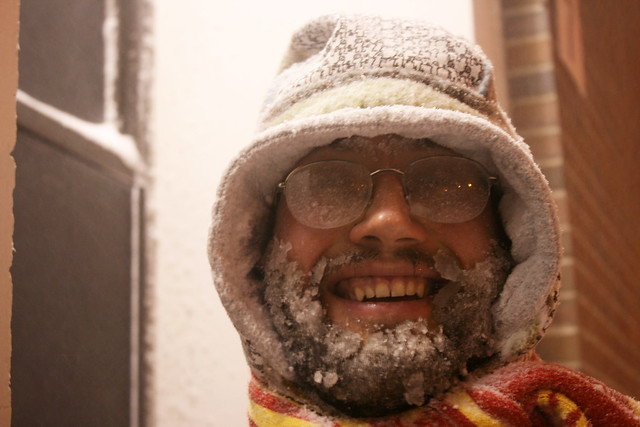 Frozen by quinn.anya, on Flickr
Frozen by quinn.anya, on Flickr
Your warm moist breath can freeze on your own face as well as your camera equipment!
Batteries
Batteries
are the biggest bug-a-boo when it comes to winter photography. Just
like your car battery can die sitting out in the cold, so can your
camera and flash batteries. Here are some tips to keep you powered up.
Bring plenty of batteries with you. Keep your camera under your coat
when you're not actually shooting. Try to keep your backup batteries in a
warm environment. If you're not going to be near a building, put a
thermal cooler in your car, put your extra batteries in there, and then
toss in a couple of hand-warmers, (these are available at outdoor sports
equipment stores and many hardware stores). If you're not going to be
near your car, and don't have a way to carry a thermal cooler around,
put the extra batteries in an inside pocket of your coat, or, an outside
pocket with a hand-warmer. Finally, be prepared for your batteries to
die much faster than you're used to.
Exposure / Metering
Most
of us are aware of how our meter works; it looks at a scene, and
calculates a proper exposure for the mid tone of 18% gray. Well, this
doesn't work very well in winter situations, because the majority of
what you photograph will be predominately white. If you let the meter
decide your exposure, it will look like this-
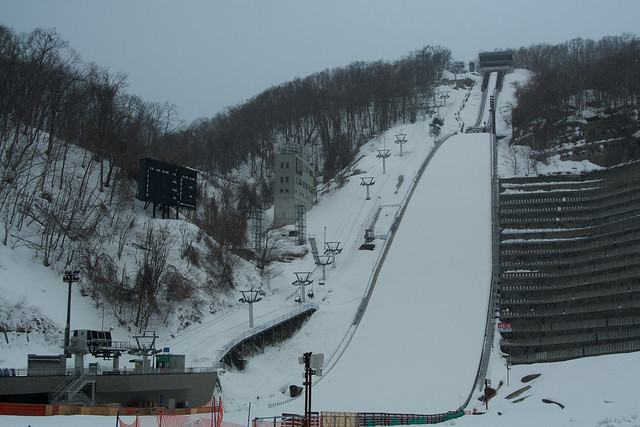 The OKURAYAMA Jump Stadium. by MIKI Yoshihito (´・ω・), on Flickr
The OKURAYAMA Jump Stadium. by MIKI Yoshihito (´・ω・), on Flickr
The predominate highlight value in winter photography will lead to underexposure.
In
winter weather photography, you must override your camera's metering
decision. You will need to increase your exposure from somewhere between
1 stop and 3 stops. There's a variable in this because it will change
depending on the scene, whether the sun is shining, and what you want it
to look like. Practice and experience is essential here.
Lighting / Color Temperature
Lighting
considerations in winter weather photography is very similar to any
other time of the year- with the exception of one thing. In winter
weather there is an increase in the amount of UV light. What does this
mean to you? It means that your photographs will be likely to take on a
blue/cyan cast. You can compensate for this in post-production, but our
goal is to always produce the cleanest original, right? There are two
things that you can do to combat this UV light. First of all, you should
put UV filters on all your lenses. Secondly, you can manually set your
white balance if you're shooting digital. If you know a few things about
setting white balance, just adjust your Kelvin temperature until the UV
effect is removed. If you're not familiar with white balance
adjustments. Remove your camera from auto white balance, and set it to
cloudy, or cloudy bright, depending on the conditions. Sometimes you may
wish to use the UV light creatively, such as the photograph below.
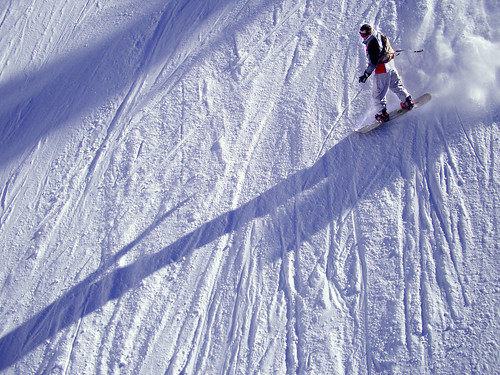 bordstrak by Uitgebeeld.nl, on Flickr
bordstrak by Uitgebeeld.nl, on Flickr
UV light is strongest in winter weather at sunset, sunrise, and on overcast days.
Remember
to keep this in mind, if you mix your light sources (ex. you photograph
a winter landscape but illuminate a person standing in the scene with a
flash), your color temperature will vary widely. This isn't necessarily
a bad thing, but you should be aware of it, so you can make informed
decisions on your lighting.
Film vs. Digital
Basically,
everything we discussed here applies to both film and digital. But,
film has several extra concerns. Again, we are going back to the cold
dry air issue. Have you ever walked through your house on a winter day
and touched a metal door knob only to get zapped? This same thing can
occur with your film camera- only it's not going to be you that gets
zapped, it's your film. As film advances through the camera, the
movement generates static electricity. That static electricity can spark
creating little lightening bolts across your photographs. Now this is
random, it's not going to ruin every picture in your roll. But, if
Murphy's Law is correct it will surely happen on your best shot. The
best way to combat this is to advance, and rewind, your film slowly.
This also helps resolve a second film issue- in extremely cold weather.
Your film can break. If you're a film photographer, it's not a bad idea
to bring a changing bag with you.
Safety
This
probably deserves a bigger section than we're going to give it- suffice
it to say that shooting in cold winter weather can be dangerous.
Exposed human skin can freeze in a matter of seconds in sub-freezing
temperatures. An unexpected winter storm can leave a person stranded for
hours, or even days. Always carry an emergency kit when you are going
out for winter shooting. Your kit can vary based on how far you're going
and how long you plan to be there. But at a minimum, it should contain:
a cell phone, a cell phone charger that can plug into your car, a full
tank of gas, a full compliment of winter attire, extra blankets,
hand-warmers, energy bars, nuts, sweets, water, flashlights, chains for
your tires (where necessary and allowed), jumper cables, and a towing
strap. It's also a good idea to let people know where you're going, and
when you plan to return. Finally, one of the most predominate injuries
that occurs in winter weather is slips and falls. Always be careful of
your footing!
Winter Sports Photography!
Skiing
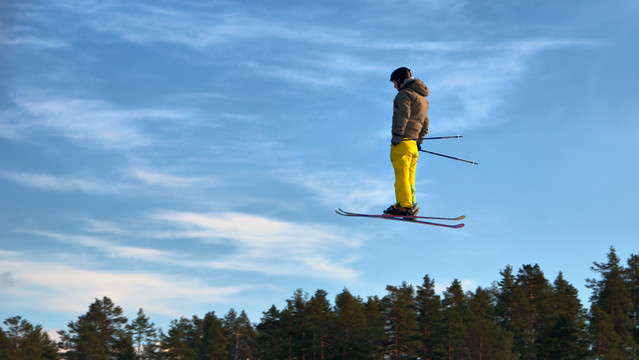 Kongsberg – Hoverskis by zen whisk, on Flickr
Kongsberg – Hoverskis by zen whisk, on Flickr
This
is a perfect example of why you must be conscious of your metering when
photographing winter sports. This image doesn't show all that white
snow in the background! You would need to remember to return your
camera's metering back to normal.
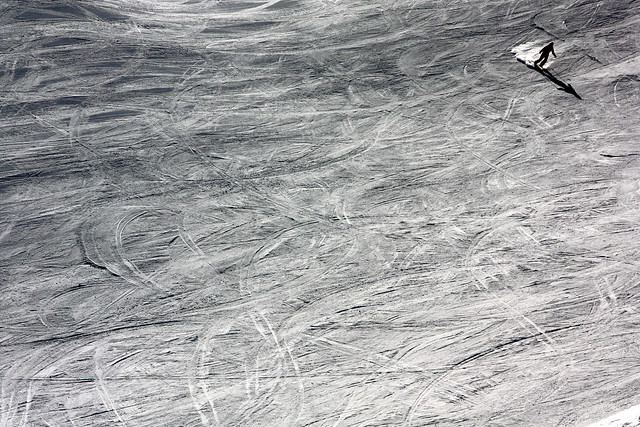 ”abgefahren” (cc) by marfis75, on Flickr
”abgefahren” (cc) by marfis75, on Flickr
Winter sports often lends itself to emphasizing texture because of the ever changing movement of the snow.
Hockey
Due
to the somewhat violent nature of the sport, and flying pucks, you'll
want to bring your telephoto lenses. It wouldn't be a bad idea to carry
your external flash as well. Remember to keep your shutter speed up and
adjust your metering depending on background and lighting.
 puck by jenny downing, on Flickr
puck by jenny downing, on Flickr
Snowboarding
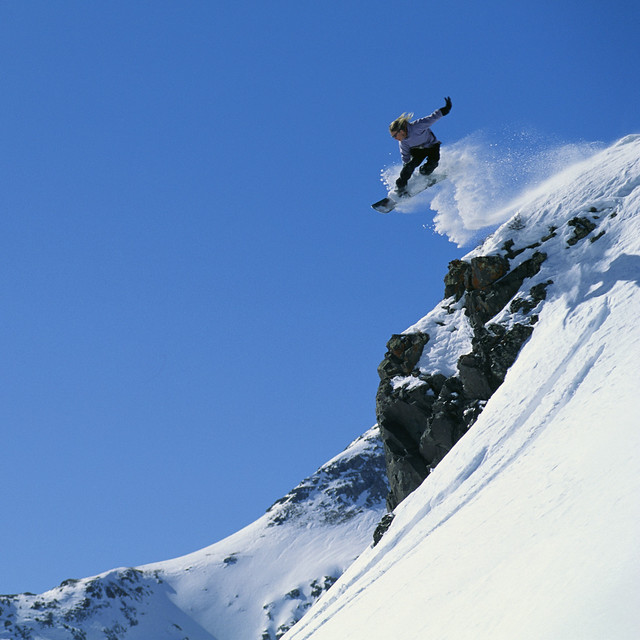 CB106655 by Spirit-Fire, on Flickr
CB106655 by Spirit-Fire, on Flickr
All
the principles of good sports, and winter, photography apply to
snowboarding, however, there is one other consideration. How do you get
close enough to shoot the action if you're not a snowboarder? This is
where you'll want your super long telephoto lens. If you decide to take a
hike, up closer, to a particular jump, make sure you're wearing good
boots with cleats. Outdoor sports stores sell cleats that you can strap
to your boots. Ski areas, and snowboarding areas, often have packed snow
that is no less slippery than sheet ice. If the action is too far away,
you could consider hitching a snowmobile ride to get you close.
Snowmobiling
Photographing
snowmobiling can take many forms, it might a family outing, a cross
country adventure tour, or even a race. Here is an important tip. Keep
everything secure! Keep your camera bag snapped, and your zippers
closed. If you drop something, even on hard packed snow, you are likely
to lose it. And, if the snow is powdery, you can kiss it goodbye for
sure. We'd like to recommend a piece of winter gear for you. You can
purchase gloves, or mittens, that have a retractable flap. They can be
worn normally for full protection, or, you can pull back a flap
revealing your fingertips. This makes doing delicate procedures like
changing batteries, or inserting memory cards much easier and without
the worry of dropping your expensive stuff.
Ice Boating
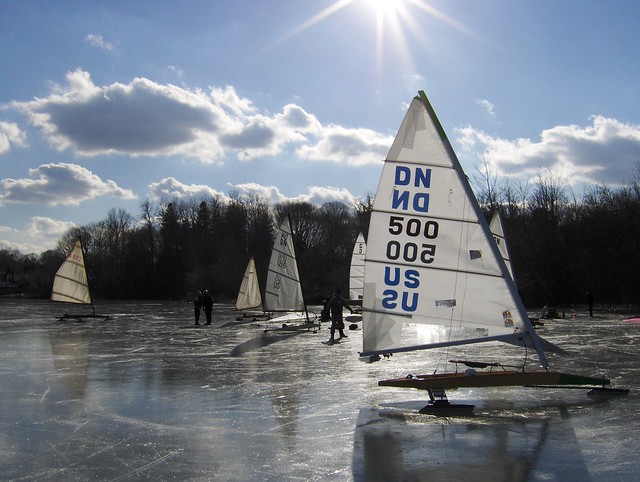 Ice Boats by Joe Shlabotnik, on Flickr
Ice Boats by Joe Shlabotnik, on Flickr
Whenever
your winter sports photography takes you out on a frozen lake, it would
be handy to have those cleats we discussed earlier. Remember, slips and
falls… But there is one other important issue. There is often a wicked
wind blowing across frozen lakes. This is going to make it much colder
than you might anticipate. It's known as windchill. You might leave your
home thinking that it's not all that cold out today, but when you get
out on that lake- the temperature is dangerously cold. When going out on
frozen lakes always check the windchill rating!
Ice Fishing
 Ice Fishing Community – Panorama by scostello22, on Flickr
Ice Fishing Community – Panorama by scostello22, on Flickr
If
you're into editorial photography, you'll finding ice fishing a
fascinating subject. Those outside the ice fishing world can't
understand why anybody would want to go sit out on a frigid lake for
hours trying to catch a fish. But the ice fishing community has a world
all of it's own. The people who are into this sport have
a camaraderie that is hard to find elsewhere. Cities of small shacks
literally spring up. Ice fishermen are out on the ice day and night. It
is an absolute wealth of subject matter- If you can take the
environment!
Special Events
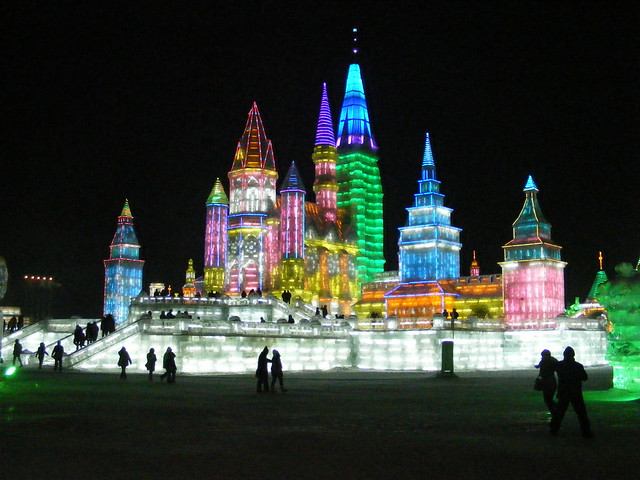 Snow and Ice World festival in Harbin, China by Rincewind42, on Flickr
Snow and Ice World festival in Harbin, China by Rincewind42, on Flickr
Regions
of the world that experience long cold winters often have festivals to
ward off the winter blues; you can find these events in China, Quebec,
Saint Paul, Minnesota, and probably just about every little town
in-between. These events usually include sports, as well as other
activities with more pageantry – such as ice castles!
We
hope that you feel inspired to slip on your snowmobile suit, strap on
your cleats, pull on your gloves, stock up on your hand-warmers, and
give winter sports photography a try!
Share this article.
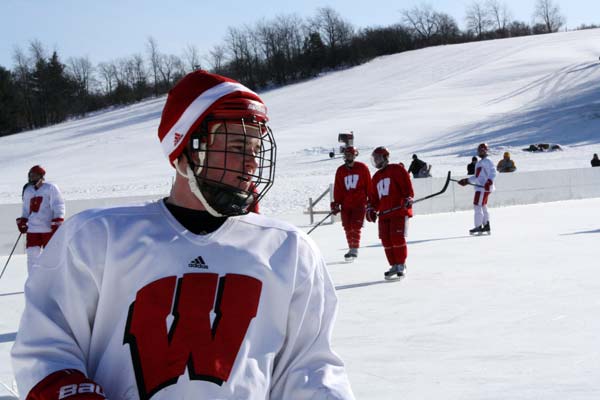 IMG_0087
IMG_0087 Alaska National Guard Iron Dog snowmobile race, Camp Denali, Alaska
Alaska National Guard Iron Dog snowmobile race, Camp Denali, Alaska
No comments:
Post a Comment
Note: Only a member of this blog may post a comment.